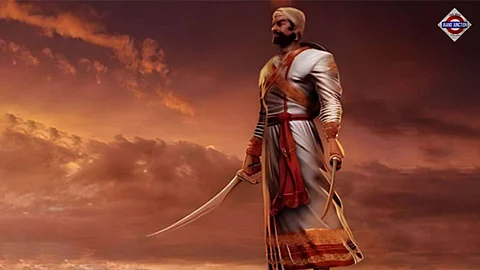

The recent cinematic portrayal of Chhatrapati Sambhaji in the movie Chhaava, played by Vicky Kaushal, has reignited debates about his legacy, with some hailing him as a valiant warrior while others argue that historical records paint a far more complex picture. In an age where history is increasingly being rewritten to serve contemporary narratives, it is imperative to turn to scholarly sources rather than social media-driven rhetoric.
Sambhaji Bhosale, the eldest son of the legendary Chhatrapati Shivaji, grew up in the shadow of his father’s extraordinary military and administrative achievements. While Shivaji was revered for his strategic brilliance, discipline, and statesmanship, Sambhaji’s reputation in historical chronicles is more controversial. His actions as a prince and later as a ruler suggest a departure from the disciplined leadership that characterized his father’s reign.
Even Shivaji Maharaj himself reportedly had serious concerns about his son’s conduct. Historical records indicate that Sambhaji was imprisoned by his father after accusations of raping a Brahmin woman and engaging in debauchery with court ladies. His escape from captivity led to an even more shocking betrayal—defecting to the Mughal Empire, where he actively fought against the Maratha Kingdom, even clashing with his father’s forces on the battlefield.
Following Shivaji’s death, Sambhaji ascended to the throne in 1681, allegedly against his father’s will, which had intended for power to be shared between his two sons. The transition of power was marred by familial conflict, with accounts stating that Sambhaji ordered the execution of his stepmother, Soyarabai, who had attempted to uphold Shivaji’s original succession plan.
Sambhaji’s rule was characterized by aggression and brutality, particularly in his campaigns against the Portuguese in Goa and the Mughals in Burhanpur. Accounts from historical sources suggest that his armies engaged in mass violence, including the rape of women in both Christian and Muslim communities. These acts earned him widespread condemnation from multiple quarters, including the Rajputs, the Portuguese, and the Mughals.
His reckless warfare ultimately provoked the relentless pursuit of the Mughal emperor Aurangzeb. After his forces looted Burhanpur, leaving devastation in their wake, Sambhaji was captured by the Mughals in 1689. The nature of his execution was brutal, with Aurangzeb subjecting him to extensive torture before finally putting him to death—a fate that even his critics acknowledge was excessively severe.
Despite the records that document Sambhaji’s controversial legacy, modern narratives, particularly those influenced by right-wing political circles in India, have sought to cast him as a heroic figure akin to his father. This selective retelling of history risks distorting the nuances of the past, reducing complex figures into one-dimensional icons.
Sambhaji’s story, as recorded by historians such as Govind Sakharam Sardesai, John F. Richards, and Stewart Gordon, presents a far more ambivalent legacy than recent portrayals suggest. Unlike the lion (Shivaji Maharaj), who remains widely respected for his strategic and progressive rule, the Chhaava’s (Sambhaji's) reign was marked by internal strife, moral failings, and questionable military decisions.
In an era where social media often replaces academic discourse, it is essential to rely on credible historical sources rather than WhatsApp forwards and politically motivated cinema. Works such as Chhatrapati Shivaji by Bhawan Singh Rana and The Marathas by Stewart Gordon provide a more balanced view of the era, helping us distinguish between historical reality and modern mythmaking.
History should be studied with objectivity, not shaped to fit contemporary political narratives. Whether one views Sambhaji as a flawed leader or a tragic figure, his legacy deserves to be examined through an informed and unbiased lens—one that acknowledges both his military struggles and the darker aspects of his reign.
Views expressed in Citizen Junction stories are that of the author and solely of the author, submitted to Jaano Junction through WRITE. Start writing on Jaano Junction to get your opinion published. Click Here to start your citizen journalism journey.
